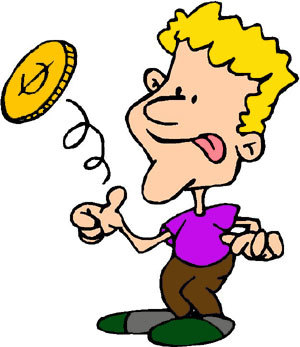Coin this Flip !
 On Wednesday, your Math teacher gives you a coin.
On Wednesday, your Math teacher gives you a coin.
She says," Keep flipping this coin until you see the pattern Head, Tail, Head. Record the number of flips required to reach this pattern, and start flipping again (and counting up from 1 again) until you see that pattern again. Then you record the second number, and start again. At the end of the day you average all of the numbers you’ve recorded."
Confused you still do the needful like the obedient student that you are.
On Thursday, the Math teacher gives you the coin again and says," Do the EXACT same thing except you flip until you see the pattern Head, Tail, Tail."
Will Thursday’s number be equal, higher or lower than Wednesday's?
This section requires Javascript.
You are seeing this because something didn't load right. We suggest you, (a) try
refreshing the page, (b) enabling javascript if it is disabled on your browser and,
finally, (c)
loading the
non-javascript version of this page
. We're sorry about the hassle.
The two patterns differ only in their final required elements (Heads on Wednesday and Tails on Thursday). So let’s look at success and failure AFTER successfully flipping the first two elements (HT).
When you flip HTH on Wednesday, you stop counting. But suppose you fail and flip HTT on Wednesday, you would have to wait until you see the next H to start hoping for the pattern again.
On Thursday, however, if you flip HTT, you stop counting. But if you flip HTH, you have failed to achieve your goal of HTT, but you are one-third of the way to achieving it again (because you got the last H which can be used as the first element of the pattern).
On average, HTH will occur in about 10 flips and HTT will occur in about 8 flips.